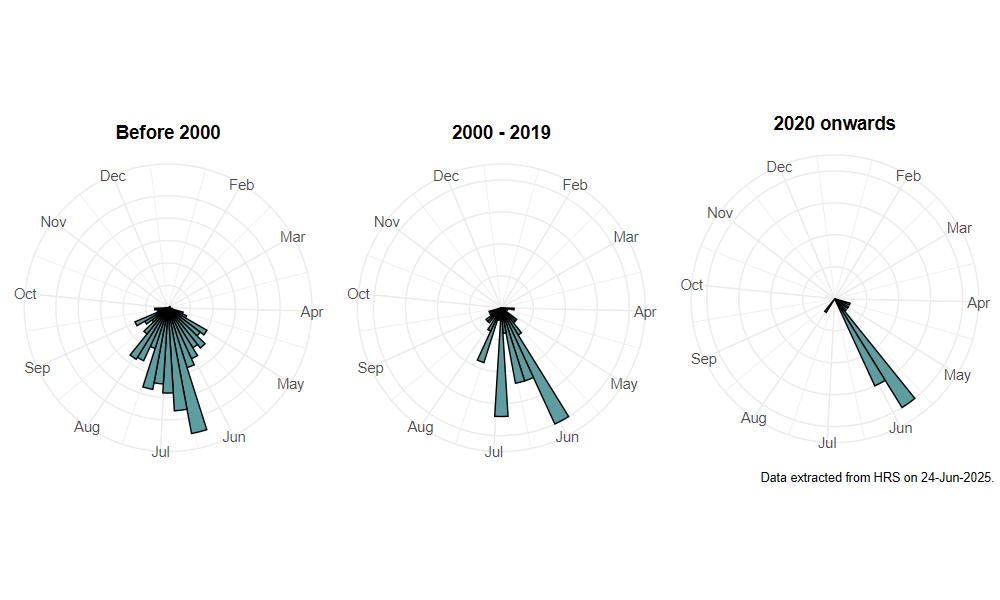Parasyrphus vittiger (Zetterstedt, 1843)
Identification
Identification difficulty = 3. ![]()
![]() according to Ball & Morris, 20241
according to Ball & Morris, 20241
Synonymy
Syrphus vittiger Zetterstedt in Coe(1953)2.
Biology
The aphid-feeding larva has been found mainly on conifers (Abies, Picea and Pinus), but also on Beech Fagus sylvatica and, in Switzerland, on Black Currant Ribes nigrum. Adults are usually found in both deciduous and coniferous woodland, but they are often taken on heathland in southern England, where they are probably associated with invading Scots Pine Pinus sylvestris. They appear to be largely arboreal, but will descend to visit flowers in rides and clearings.
Flight period
The following plots show the number of unique records per week excluding those reported to be of immature stages.

Distribution
This species appears to be most frequent in northern Britain, especially the Scottish Highlands, but there are also records from the heathlands of southern-central England. There is one relatively recent record from Wales, and very few from the south-west peninsula or eastern England.

Trends
The following plots show the Frescalo TFactor vs year and a map of the rescaled frequency (all records) for the species.